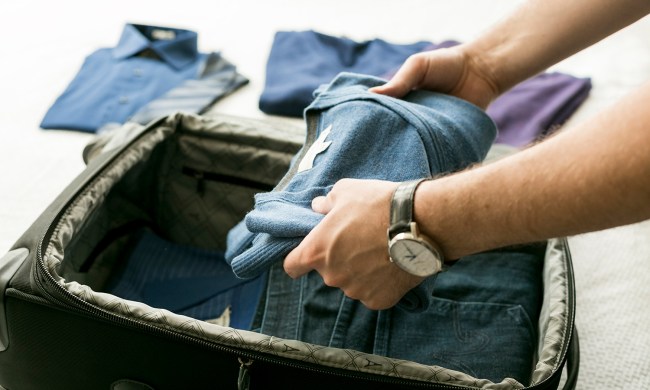Planning a vacation? I know the feeling – it usually starts with a spark of excitement, a growing list of dream destinations, and endless scrolling through travel blogs and Instagram photos. Then comes the deep dive into flight searches, hotel comparisons, itinerary planning, and second-guessing every possible choice. Are you packing too much into one day? What should you even bring? Before you know it, what started as an exciting idea begins to feel like an overwhelming project. Don’t worry, though! I’m here to walk you through how to plan a vacation step-by-step so you can get the most out of your time and planning.
Step-by-step guide for stress-free vacation planning
1. Choose your destination

Deciding where you want to go is the first step in planning any vacation. Are you dreaming of relaxing on a tropical beach in Bali, exploring the historic streets of Rome, or hiking the trails of Patagonia? Maybe you’re picturing yourself sipping coffee in a Parisian café, snorkeling in clear waters in the Maldives, or chasing the northern lights in Iceland.
In this first step of the process, consider factors like your budget, travel restrictions, weather, and the kind of experience you’re hoping for.
2. Set a budget

Once you have a destination in mind, it’s time for everyone’s favorite (or not-so-favorite) part, setting a budget! Knowing how much you’re willing to spend will guide your choices for flights, accommodations, activities, and dining. Be sure to factor in hidden costs like travel insurance, local transportation, and tips. When you have a realistic budget, you can be sure you won’t return home financially stressed.
Remember to keep your budget in mind when you’re choosing your destination. For example, a week in Bali might cost significantly less than a week in Switzerland, so plan accordingly.
3. Pick your travel dates

Your travel dates are crucial to the entire experience of your vacation. If you’re looking to save costs, flexibility with your travel dates can help save you money on flights and accommodations. Plus, traveling during the off-season or shoulder season often means lower prices and fewer crowds. Use travel tools like Google Flights to check for the best deals and plan accordingly.
4. Book flights and accommodations

After finalizing your dates, it’s time to set your flights and accommodations in stone! I recommend booking early to secure the best rooms and rates. You should also consider package deals or loyalty discounts at this stage.
Mark Wolters of Wolters World suggests carefully reading hotel reviews and checking the fine print before you book your accommodations to avoid unexpected charges, such as resort fees. It’s also a good idea to double-check for additional taxes that might not be included in the initial price. You don’t want to end up blowing your budget by not considering the additional unexpected fees that can sometimes come with hotels.
5. Plan your itinerary

An itinerary helps you make the most of your vacation. For itinerary creation, I use Jotform, which has a bunch of templates that can help you stay organized.
Research popular attractions, local events, and must-try dining spots when filling out your itinerary. For example, if you’re heading to New York City, you might want to plan visits to iconic landmarks like the Statue of Liberty and Central Park but also leave time for a spontaneous Broadway show. When you’re making your itinerary, I recommend not overloading your schedule. Always leave room for spontaneous adventures and relaxation!
Here’s a sample 5-day itinerary for a city trip:
- Day 1: Arrival and city exploration
- Day 2: Guided tour of historical sites
- Day 3: Take a day trip to a nearby attraction or scenic location
- Day 4: Enjoy a leisurely morning at a café, followed by visits to museums or galleries
- Day 5: Final stroll around the city, last-minute shopping, and departure
If you’re planning a beach vacation, your itinerary might look like this:
- Day 1: Arrival and beach relaxation
- Day 2: Water activities like snorkeling or kayaking
- Day 3: Explore nearby towns or islands
- Day 4: Spa day and sunset dinner
- Day 5: Morning swim and departure
These are just examples; you can adjust the sample itineraries to suit your destination and preferences.
6. Take care of logistics

Logistics are often overlooked but are essential when learning how to plan a vacation. Make sure you double-check passport and visa requirements and book the necessary transportation. According to the U.S. Department of State, some countries (including most of Europe) require that your passport expiration date is at least six months away, so make sure your passport is in order before traveling internationally.
You should also download essential apps, such as maps, translation tools, and ride-sharing services, to help make your trip smoother.
7. Pack smart

Packing smart can save you time and unneeded stress during your trip. Make a packing list tailored to your destination’s weather and planned activities. Don’t forget essentials like travel documents, chargers, medications, and a travel first-aid kit. If you’re heading to a tropical destination, lightweight clothing, sunscreen, and a reusable water bottle should be at the top of the list.
The TSA’s travel checklist recommends packing items in layers (shoes one layer, clothes one layer, electronics one layer). And don’t forget that liquids, gels, and aerosols packed in carry-on must follow the 3-1-1 rule.
3-1–1 rule:
- 3.4 ounces or less per container
- 1 quart size, clear, plastic, zip-top bag
- 1 bag per passenger
8. Prepare for emergencies

You should always be prepared for unexpected emergencies. Keep copies of important documents, share your itinerary with someone you trust, and have a plan in place for emergencies. Knowing the location of nearby hospitals or consulates can also be helpful.




